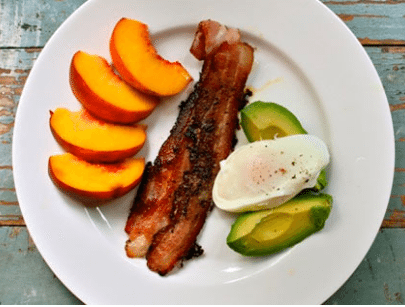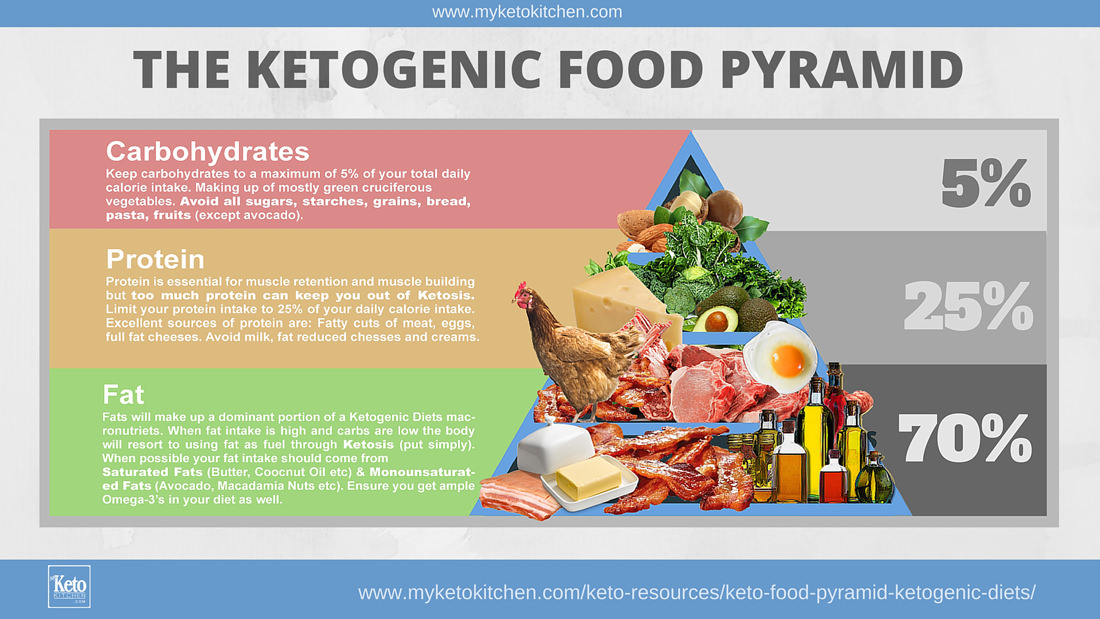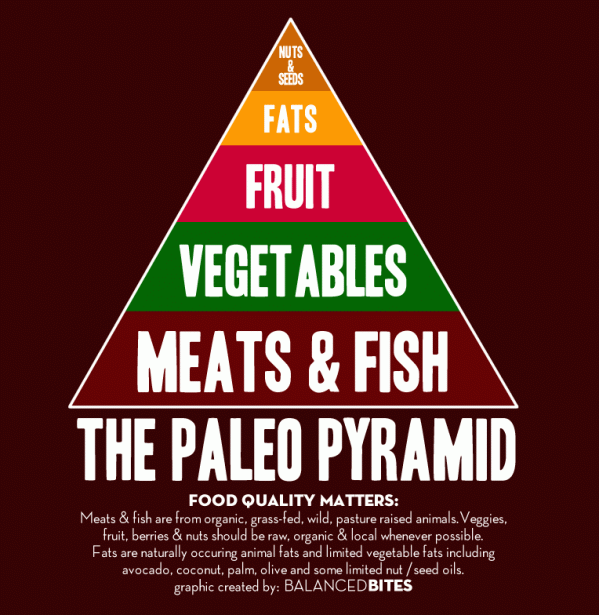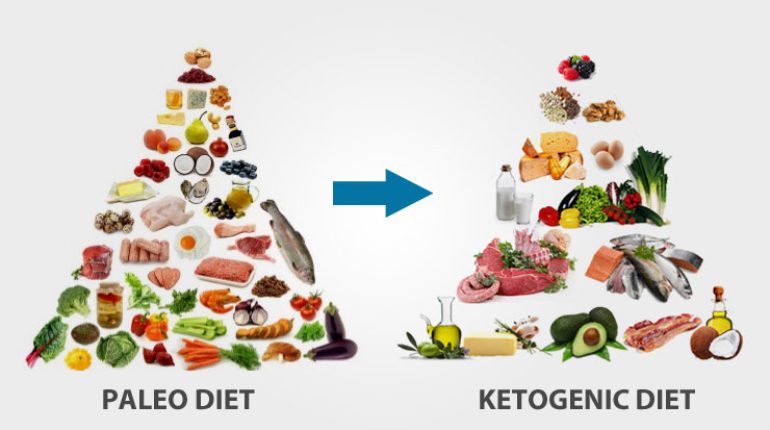All you need to know about the Paleo and Ketogenic Diets

Whether it is a low-carb, low-fat, high-fat or high-protein diet, everyone is always looking for a quick solution for their weight problems.
Personally, I don’t think that there is one diet that is right for everyone.
Your diet should depend on your body type. Those who are trying to sell you a single diet-plan may be a little too one-sided. With that being said; if you are looking to lose weight, two very effective diets that can help you shed it faster include the Ketogenic and Paleo Diet.
https://www.instagram.com/p/BTu2p9VjSLB/
The Paleolithic and Ketogenic diets usually get lumped together in the same category. While there is some overlap in their principles, the two patterns are still distinct in a number of ways. Learning and understanding those differences could be the key to finding a diet that is perfect for you.
One of the best approaches would be combining ideas from both diets while keeping your carbs and sugar levels under control. Along with weight loss, these steps can be a great start for gut healing and fat burning; while the basic principles can be utilized for a lifetime to maintain a healthy functioning brain and body.

In the past, ketogenic diet was used as a tool for disease management, not weight loss. Now it is a common dietary intervention for sensory disturbances such as epilepsy. The main keto-goal is to force the body into a state of ketosis – the burning process of stored body fat.
Under this plan, you achieve ketosis through fasting, the increase of dietary fat and the reduction of carbohydrates. A 2004 published study by Experimental & Clinical Cardiology found that long-term adherence to ketogenic eating patterns may:
This diet actually seems to treat epilepsy as well, however, there is a catch; it is especially difficult to tolerate. According to WebMD , the keto-diet prescribes that dieters consume 3 calories of fat for every calorie of carbohydrate or protein.
"A meal might include a small portion of chicken, a little bit of fruit, and a lot of fat, typically butter or cream. Frankly, it's a difficult diet to swallow.”
https://www.instagram.com/p/BSjTjbNDeFp/
Since the keto diet includes a high-fat, low-carb and moderate protein eating pattern, it has a very specific protein-nutrient breakdown:
This might seem ‘easy’ when you first start considering the Ketogenic diet, but mind you, it takes careful planning and oodles of tolerance. Keeping your net carbohydrate intake at or between 20-50 grams per day is harder than you think.
The ‘net carbohydrate’ count is the total carbohydrate minus the fibre. Thus, kale has a net carbohydrate count of 6 grams and the goal is to reach a state of ketosis, where your body burns ketones as sources of energy, instead of glucose.
[caption id="attachment_26286" align="aligncenter" width="1100"] Photo Credit: MyKetoKitchen.com[/caption]
Photo Credit: MyKetoKitchen.com[/caption]
The Paleo plan or the ‘caveman diet’ focuses more on eating meat under the assumption that early cave dwellers had little to no access to greens and grain, and thus were ‘forced’ to consume a diet primarily composed of protein. Practitioners of this plan suggest getting energy from animal products that are low in carbohydrates but high in protein.
The Paleo dieters also avoid processed foods like:
Hypothetically, eating the same way as the prehistoric aboriginals should improve your health since the modern man faces many chronic diseases that didn’t plague them in the ancient times. However, the Time magazine nutritional experts think of the idea as a gross oversimplification:

Dr. Loren Cordain , founder of the Paleo-diet movement and author of the N.Y Times bestseller, “ The Paleo Diet ” says the paleo course is a high protein diet; however, other paleo experts believe your plate should be filled with only some meat and a lot of vegetables. Unlike the ketogenic diet, the macronutrient profile of the paleo-pattern has a wider range of percentages:
The paleo routine might come as a shock to your normal way of eating but once you get used to it, you might wonder why you never thought of the plan before. While you are free to eat all meats, nuts and fruits, there are some recommendations as to how you much you should consume each food.
For instance, fruits and berries were much harder to come by in the Palaeolithic “caveman” era. You might only have access to those foods few months out of a year, depending on your geographical location. So the general suggestion would be to eat them in moderation.
The ketogenic diet, getting most of your calories just from fat, is only sustainable for the short-term, while the Paleo routine represents a more continual dieting course.
When you break it down from a food perspective, both diets avoid grains and processed foods, but the paleo diet also eliminates dairy. Keto avoids sweet fruits and vegetables where Paleo includes few from each category.
While both plans include non-starchy vegetables, meats and poultry, the ketogenic pattern focuses on the manipulation of fats, proteins and carbs fitting within that system of eating. The paleo diet on the hand is more about healthy food choices and has a greater balance of macronutrients.
[caption id="attachment_26287" align="aligncenter" width="770"] Photo Credit: FitHacker.com[/caption]
Photo Credit: FitHacker.com[/caption]
The protein pattern is similar in general, but the paleo diet is somewhat stricter when it comes to plant based protein, and lentils, beans, peanuts and other legumes are discouraged.
The ketogenic diet is high in fat and allows consumption of vegetable oils and dairy products like butter, cream cheese, hard cheeses and ghee. Today, plenty of information reveals the harmful effects of vegetable oils like soybean, canola and corn oils. These oils are likely to mess up the fatty-acid composition of the body’s cells if used in excess.
The paleo diet, however, avoids these oils and puts greater emphasis on plant-based fats like avocado, coconuts and olives. Additionally, many paleo advocates prefer consuming grass-fed animal products, where this specification might be irrelevant for keto followers.
Like any other low-carb diet, the ketogenic diet discourages fruit consumption, as this form of sugar contains glucose and fructose, both said to contribute to weight gain and insulin resistance.
The only exception would be a handful of berries every now and then because they have a good balance of sugars along with a high, herb-like antioxidant percentage.
On the other hand, the paleo pattern supports the consumption of low-sugar fruits. Its followers believe that fructose and glucose levels in fruit result in weight gain only if you consume too much of each type. Plus, fruit in moderation can provide you with tons of nutrients that can be healthy for an active lifestyle.
Even though both diet patterns, namely paleo and keto, focus on getting fat and protein as the main energy sources, the former still allows lot of carbs from potatoes, carrots and other root and tuber vegetables. These starchy foods are avoided in the keto routine.
https://youtu.be/6AQiOU9YWcY
Both diets require some serious ‘getting used to’. Those who take on the paleo diet should brace for the so-called ‘keto flu’ or the ‘paleo flu’, the typical period of adaption with this meal plan, in the first two or three weeks.
Our bodies often experience some withdrawal symptoms from all the gluten and sugar subtraction. Plus, as the body begins to burn fat instead of glucose for fuel, it is only a few days of unpleasant cravings. Adding some sea salt or magnesium to the meals can usually help smooth out the edges.
Newbies to the ketogenic diet plan may have to endure a longer adjustment period – ranging from several weeks to months – as it is not easy to tolerate. And with the avoidance of dairy, it might get challenging to intake enough fat from every meal without some serious effort.
Despite having their fair share of pros and cons, both ketogenic and paleo diets are worth a try. One isn’t inherently different than the other. It is only a matter of finding the right meal plan that works best for your body needs. Everybody should consider experimenting with this spectrum of Paleo and Keto to find the optimal macro-nutrient ratio that works best with their lifestyle and health goals.
[divider style="dashed" top="30" bottom="20"]
Audrey Throne is a mother and a professional blogger by choice. She has completed her masters in English literature from the University of Birmingham. As a blogger she wrote quite a few posts on health, technology as well as management. Currently, she is writing for brainblog. Find her on Twitter: @audrey_throne.
[divider style="dashed" top="20" bottom="30"]
Your diet should depend on your body type. Those who are trying to sell you a single diet-plan may be a little too one-sided. With that being said; if you are looking to lose weight, two very effective diets that can help you shed it faster include the Ketogenic and Paleo Diet.
https://www.instagram.com/p/BTu2p9VjSLB/
The Paleolithic and Ketogenic diets usually get lumped together in the same category. While there is some overlap in their principles, the two patterns are still distinct in a number of ways. Learning and understanding those differences could be the key to finding a diet that is perfect for you.
One of the best approaches would be combining ideas from both diets while keeping your carbs and sugar levels under control. Along with weight loss, these steps can be a great start for gut healing and fat burning; while the basic principles can be utilized for a lifetime to maintain a healthy functioning brain and body.
What it means to be Ketogenic? (aka Keto Adapted)

In the past, ketogenic diet was used as a tool for disease management, not weight loss. Now it is a common dietary intervention for sensory disturbances such as epilepsy. The main keto-goal is to force the body into a state of ketosis – the burning process of stored body fat.
Under this plan, you achieve ketosis through fasting, the increase of dietary fat and the reduction of carbohydrates. A 2004 published study by Experimental & Clinical Cardiology found that long-term adherence to ketogenic eating patterns may:
- Lower blood LCD and glucose
- Reduce body mass
- Increase the level of ‘good’ cholesterol
This diet actually seems to treat epilepsy as well, however, there is a catch; it is especially difficult to tolerate. According to WebMD , the keto-diet prescribes that dieters consume 3 calories of fat for every calorie of carbohydrate or protein.
"A meal might include a small portion of chicken, a little bit of fruit, and a lot of fat, typically butter or cream. Frankly, it's a difficult diet to swallow.”
https://www.instagram.com/p/BSjTjbNDeFp/
What’s included in the Keto Diet?
Since the keto diet includes a high-fat, low-carb and moderate protein eating pattern, it has a very specific protein-nutrient breakdown:
- 70-75% calories from fat
- 20-25% from protein
- 5-10% from carbohydrates
This might seem ‘easy’ when you first start considering the Ketogenic diet, but mind you, it takes careful planning and oodles of tolerance. Keeping your net carbohydrate intake at or between 20-50 grams per day is harder than you think.
The ‘net carbohydrate’ count is the total carbohydrate minus the fibre. Thus, kale has a net carbohydrate count of 6 grams and the goal is to reach a state of ketosis, where your body burns ketones as sources of energy, instead of glucose.
[caption id="attachment_26286" align="aligncenter" width="1100"]
 Photo Credit: MyKetoKitchen.com[/caption]
Photo Credit: MyKetoKitchen.com[/caption]What is the Palaeolithic Diet?
The Paleo plan or the ‘caveman diet’ focuses more on eating meat under the assumption that early cave dwellers had little to no access to greens and grain, and thus were ‘forced’ to consume a diet primarily composed of protein. Practitioners of this plan suggest getting energy from animal products that are low in carbohydrates but high in protein.
The Paleo dieters also avoid processed foods like:
- Table salt
- Refined sugar
- Dairy products
Hypothetically, eating the same way as the prehistoric aboriginals should improve your health since the modern man faces many chronic diseases that didn’t plague them in the ancient times. However, the Time magazine nutritional experts think of the idea as a gross oversimplification:
Any diet that restricts certain food groups and emphasizes others isn’t balanced, experts say. There is not a strong scientific theory to prove that paleo-eaters live longer and healthier lives than those who don’t follow the diet.
What’s included in the Paleo Diet?

Dr. Loren Cordain , founder of the Paleo-diet movement and author of the N.Y Times bestseller, “ The Paleo Diet ” says the paleo course is a high protein diet; however, other paleo experts believe your plate should be filled with only some meat and a lot of vegetables. Unlike the ketogenic diet, the macronutrient profile of the paleo-pattern has a wider range of percentages:
- 22-40% from carbohydrates
- 19-35% from protein
- 28-47% of calories from fat
The paleo routine might come as a shock to your normal way of eating but once you get used to it, you might wonder why you never thought of the plan before. While you are free to eat all meats, nuts and fruits, there are some recommendations as to how you much you should consume each food.
For instance, fruits and berries were much harder to come by in the Palaeolithic “caveman” era. You might only have access to those foods few months out of a year, depending on your geographical location. So the general suggestion would be to eat them in moderation.
The Paleo Diet versus the Ketogenic Diet: What's the difference?
The ketogenic diet, getting most of your calories just from fat, is only sustainable for the short-term, while the Paleo routine represents a more continual dieting course.
When you break it down from a food perspective, both diets avoid grains and processed foods, but the paleo diet also eliminates dairy. Keto avoids sweet fruits and vegetables where Paleo includes few from each category.
While both plans include non-starchy vegetables, meats and poultry, the ketogenic pattern focuses on the manipulation of fats, proteins and carbs fitting within that system of eating. The paleo diet on the hand is more about healthy food choices and has a greater balance of macronutrients.
[caption id="attachment_26287" align="aligncenter" width="770"]
 Photo Credit: FitHacker.com[/caption]
Photo Credit: FitHacker.com[/caption]The protein comparison
The protein pattern is similar in general, but the paleo diet is somewhat stricter when it comes to plant based protein, and lentils, beans, peanuts and other legumes are discouraged.
The fats differ
The ketogenic diet is high in fat and allows consumption of vegetable oils and dairy products like butter, cream cheese, hard cheeses and ghee. Today, plenty of information reveals the harmful effects of vegetable oils like soybean, canola and corn oils. These oils are likely to mess up the fatty-acid composition of the body’s cells if used in excess.
The paleo diet, however, avoids these oils and puts greater emphasis on plant-based fats like avocado, coconuts and olives. Additionally, many paleo advocates prefer consuming grass-fed animal products, where this specification might be irrelevant for keto followers.
Fruit contribution
Like any other low-carb diet, the ketogenic diet discourages fruit consumption, as this form of sugar contains glucose and fructose, both said to contribute to weight gain and insulin resistance.
The only exception would be a handful of berries every now and then because they have a good balance of sugars along with a high, herb-like antioxidant percentage.
On the other hand, the paleo pattern supports the consumption of low-sugar fruits. Its followers believe that fructose and glucose levels in fruit result in weight gain only if you consume too much of each type. Plus, fruit in moderation can provide you with tons of nutrients that can be healthy for an active lifestyle.
Paleo Isn’t Necessarily Low-Carb
Even though both diet patterns, namely paleo and keto, focus on getting fat and protein as the main energy sources, the former still allows lot of carbs from potatoes, carrots and other root and tuber vegetables. These starchy foods are avoided in the keto routine.
https://youtu.be/6AQiOU9YWcY
Adapting to it
Both diets require some serious ‘getting used to’. Those who take on the paleo diet should brace for the so-called ‘keto flu’ or the ‘paleo flu’, the typical period of adaption with this meal plan, in the first two or three weeks.
Our bodies often experience some withdrawal symptoms from all the gluten and sugar subtraction. Plus, as the body begins to burn fat instead of glucose for fuel, it is only a few days of unpleasant cravings. Adding some sea salt or magnesium to the meals can usually help smooth out the edges.
Newbies to the ketogenic diet plan may have to endure a longer adjustment period – ranging from several weeks to months – as it is not easy to tolerate. And with the avoidance of dairy, it might get challenging to intake enough fat from every meal without some serious effort.
All in all…
Despite having their fair share of pros and cons, both ketogenic and paleo diets are worth a try. One isn’t inherently different than the other. It is only a matter of finding the right meal plan that works best for your body needs. Everybody should consider experimenting with this spectrum of Paleo and Keto to find the optimal macro-nutrient ratio that works best with their lifestyle and health goals.
[divider style="dashed" top="30" bottom="20"]
 AUTHOR BIO: Audrey Throne
AUTHOR BIO: Audrey Throne
Audrey Throne is a mother and a professional blogger by choice. She has completed her masters in English literature from the University of Birmingham. As a blogger she wrote quite a few posts on health, technology as well as management. Currently, she is writing for brainblog. Find her on Twitter: @audrey_throne.
[divider style="dashed" top="20" bottom="30"]




































































































